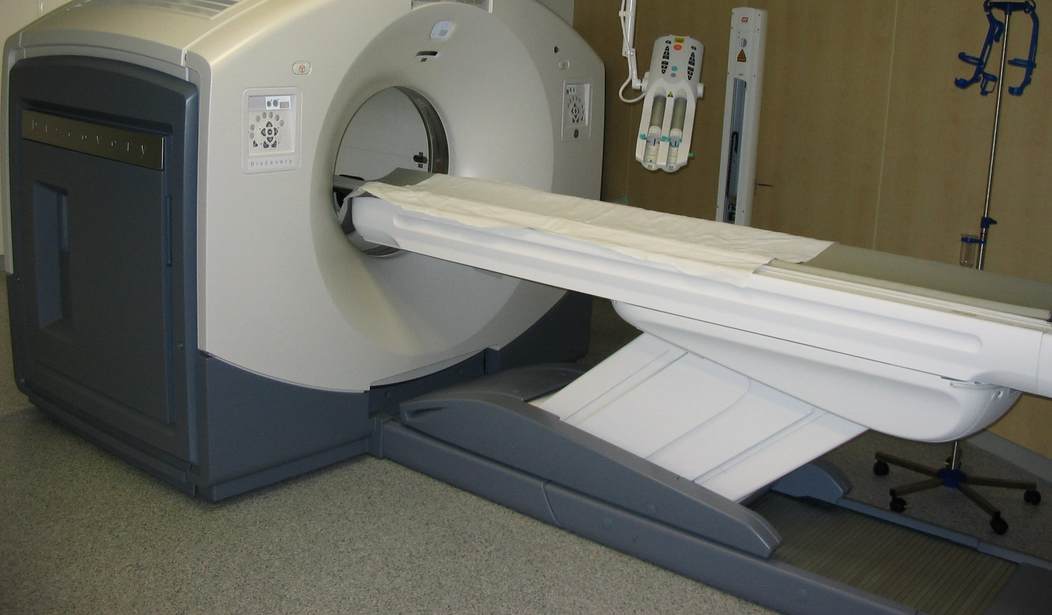These days, imaging machines are to doctors what the Oracle at Delphi was to ancient Greeks. The patient is stuck into one or other of them and, hey, presto! Out comes the diagnosis with no possibility of error or appeal. Diagnoses that used to take weeks of elaborate examinations and painful investigations to make are now made in less than half a day. Who now remembers such terrible ordeals as the air encephalogram, happily as redundant as the starting handle of a car?
But such is the nature of things that every advantage has its drawbacks. Older doctors tend to lament that modern technology reduces the ability of their younger colleagues to perform physical examination of their patients or to exercise judgment, to the point that they are no longer aware of the necessity to exercise it: everything now is done by scan and algorithm.
There are two more tangible drawbacks to scanning technology: cost and the radiation to which it exposes patients, with possible ill-effects later in life. Medical scanning is now by far the most important cause of the population’s exposure to radiation; and it has been estimated that up to a half of all scans performed are unnecessary.
An article in a recent edition of the New England Journal of Medicine describes ways in which the waste of scans might be controlled or curtailed in an attempt to keep costs down. Some insurers are employing radiology benefit management firms (now known as RBMs, we live in a world of acronyms) to approve or deny physicians’ requests for scans on their patients. This method reduces the number of scans performed but not necessarily costs, since a lot of medical time is used up in providing the RBMs with the information required for them to be able to make a decision. The authors of the article (one of whom is an MBA as well as an MD) writes that “the time physicians and their staff spend gathering and transmitting information and engaging with RBMs reduces their productivity and results in cost shifting rather than value creation.”
This sentence demonstrates that the emphasis of the article is economic rather than clinical, for it omits to mention that a reduction in unnecessary scans is a purely medical benefit in so far as it reduces the radiation to which patients are exposed, and this is so whether or not such a reduction saves money. In the long term it will probably save lives.
It cannot be said that the presence of an MBA among the authors does much for the style in which the article is written. One feels one’s eyes glazing over as one reads sentences like the following:
Implicit in this model [of Clinician Decision Support, or CDS] is the idea that imaging stewards will be able to leverage content that’s based on peer-reviewed evidence and expert consensus and contained within order-entry and other systems.
I was reminded of what a professor of medicine in Bristol wrote when the British government introduced what it called “clinical governance” into medicine: “Clinical governance is a term untranslatable into any other language,” he said, “including English.” The first skill taught in any MBA course must surely be JALM: Jargon-and Acronym-Led Mystification.
Perhaps I am very old-fashioned, but when I read that the stewardship model “encourages the use of imaging technology… to more reliably create value at the point of care” I can’t help but feel slightly unnerved, and think of the remark by the great physician and researcher of hypertension, Sir George Pickering: “A minor operation is an operation performed on somebody else.” A value created at the point of care can so easily be a value created for somebody else.









Join the conversation as a VIP Member